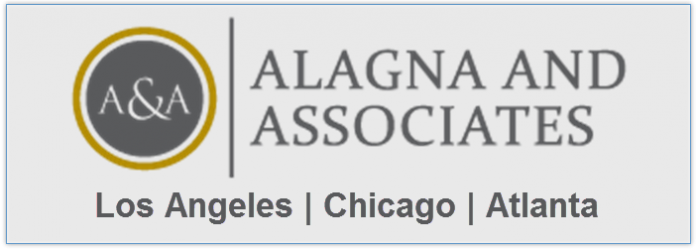Regarding the CARES Act Employee Retention Credit (ERC)
On March 11, 2021, the President signed into law, the American Rescue Plan Act of 2021 (the “ARP”). It is considered to be one of the largest economic rescue packages in US history. The ARP addresses the ongoing economic challenges facing employers and employees caused by the COVID-19 pandemic. One of the more important provisions for employers in the ARP is the extension of the Employee Retention Credit (the “ERC”).
The Internal Revenue Service is urging employers to take advantage of the newly-extended employee retention credit, designed to make it easier for businesses that, despite challenges posed by COVID-19, choose to keep their employees on the payroll.
The ERC is not a loan but a refundable payroll tax credit that is being offered to businesses of all sizes. Payroll Tax Credit Refunds are a significant opportunity to infuse cash quickly into your business. They can be retroactively applicable to both, 2020 and 2021.
Many think that this is too good to be true, but it is absolutely a part of the legislation and unfortunately, only the PPP is getting the attention.
The credits are per employee, per quarter and may be due to you even if your business has been partially suspended due to government mandates. This is an above-the-line credit, and it will offset your federal tax withholdings. Excess amounts are being refunded to businesses in a matter of weeks. Even if you already applied and/or received funds for a PPP loan, you still want to understand this opportunity as there are discussions that may allow you to be able to take both the PPP loan and the ERC credit.
From the IRS’ website…
“As a result of the new legislation, eligible employers can now claim a refundable tax credit against the employer share of Social Security tax equal to 70% of the qualified wages they pay to employees after December 31, 2020, through June 30, 2021. Qualified wages are limited to $10,000 per employee per calendar quarter in 2021. Thus, the maximum ERC amount available is $7,000 per employee per calendar quarter, for a total of $14,000 in 2021.“
The above was written in January, before President Biden signed the new benefit program on March 11, 2021. It’s been expanded even more! The newest version warrants serious consideration by all employers, including nonprofits. With some review and planning, you may be able to claim as much as $33,000 in payroll tax credits per employee (That would include the new maximum of $7,000 per quarter in 2021 and the possible $5,000 refund from 2020)!
Initially launched under the 2020 CARES Act in March, 2020, ERC provided a quarterly payroll tax credit to eligible employers impacted by COVID-19 (e.g., limited operations due to government orders or significant quarterly decline in gross receipts). The second stimulus law passed in December 2020 significantly expanded eligibility for employers to claim ERC, including some updates that can be applied retroactively. Notably, employers who had PPP loans may be able to claim ERC. (Note: ERC cannot be claimed on wages that were included in PPP forgiveness or FFCRA credits). The ARC, signed on March 11, 2021, was where they expanded it even further.
Please click here to arrange a no-obligation, 20 minute discussion to show you the benefits of working directly with us. Or call me at +1 951-313-7200.
Who qualifies and who does not?
There is a big misunderstanding and much confusion surrounding the CARES Act Employee Retention Credit (ERC): Who qualifies and who does not?
Unfortunately, many companies do not realize that per the CARES Act law, almost all businesses qualify for the Employee Retention Credit. This confusion among business leaders is literally costing their companies millions of dollars; money that the Federal Government has specifically allocated to help U.S. businesses continue to survive and prosper during this historic time of pandemic and economic crisis.
The ERC allows businesses and non-government nonprofit organizations impacted by COVID-19 eligible to receive a refundable, above the line Federal payroll tax credit. This credit can be utilized as a cash refund, worth up to $5,000 per employee for 2020.
Here are the five most common misconceptions regarding the Employee Retention Credit:
- We are an essential business and therefore we do not qualify.
False. The CARES Act does not make an “essential” versus “non-essential” employer distinction regarding ERC qualification. An essential business can qualify for the ERC either because its operations are fully or partially suspended because of a governmental order, or because gross receipts for the business in any quarter in 2020 are below 50% of gross receipts for the same quarter in 2019.
- We were not shut down and stayed open the whole time and therefore, we do not qualify.
False. If your business had to change operations in any way due to governmental orders OR if gross receipts for the business in any quarter in 2020 are below 50% of gross receipts from the same quarter in 2019, your business qualifies. A change in operations means extra cleaning or sanitizing, installing/utilizing protective equipment, temperature checks, a change in job roles/functions, and more.
- Our company made over 50% sales year-over-year and therefore, we do not qualify.
False. Your business needs to either experience a 50% decline in gross receipts OR suspension in operations, not both. Almost every business has been impacted in some way by a national, state, or local governmental order, therefore qualifying the business.
- We are profitable this year and therefore, we do not qualify.
False. We have helped many companies that were profitable this year receive anywhere from thousands to millions of dollars in credits. This includes grocers, manufacturing, logistics companies, and more. If your business has been impacted in some way by the pandemic, you can qualify.
- We are a non-profit company, don’t pay taxes, and do not qualify.
False. Unlike past employee retention credits, this credit also applies to tax-exempt organizations if the operation of the organization is fully or partially suspended due to governmental orders related to COVID-19. Many non-profit schools, day care centers, counseling centers, ministries, churches, and clubs closed their buildings and/or partially suspended services to comply with government orders and guidelines. This cessation of services is a suspension of operations which would qualify that organization for the ERC.
If your company falls into any one of these categories, most likely, your company qualifies! And unlike the PPP loans, there is NO public disclosure with the Employee Retention Credit because it is a Federal tax credit. All information is highly protected for nondisclosure under the Internal Revenue Service Code.
We work exclusively, with Gold Coast Equities, and Synergi Partners, the largest private disaster tax credit company in the United States. Synergi, along with the law firm, DLA Piper, were both instrumental in the drafting of the tax credit legislation along with the CARES Act, participating in many of the committee meetings. The work is guaranteed and they will defend their work against any audits, if necessary. Their work and methods are consistent, proven, and defensible.


